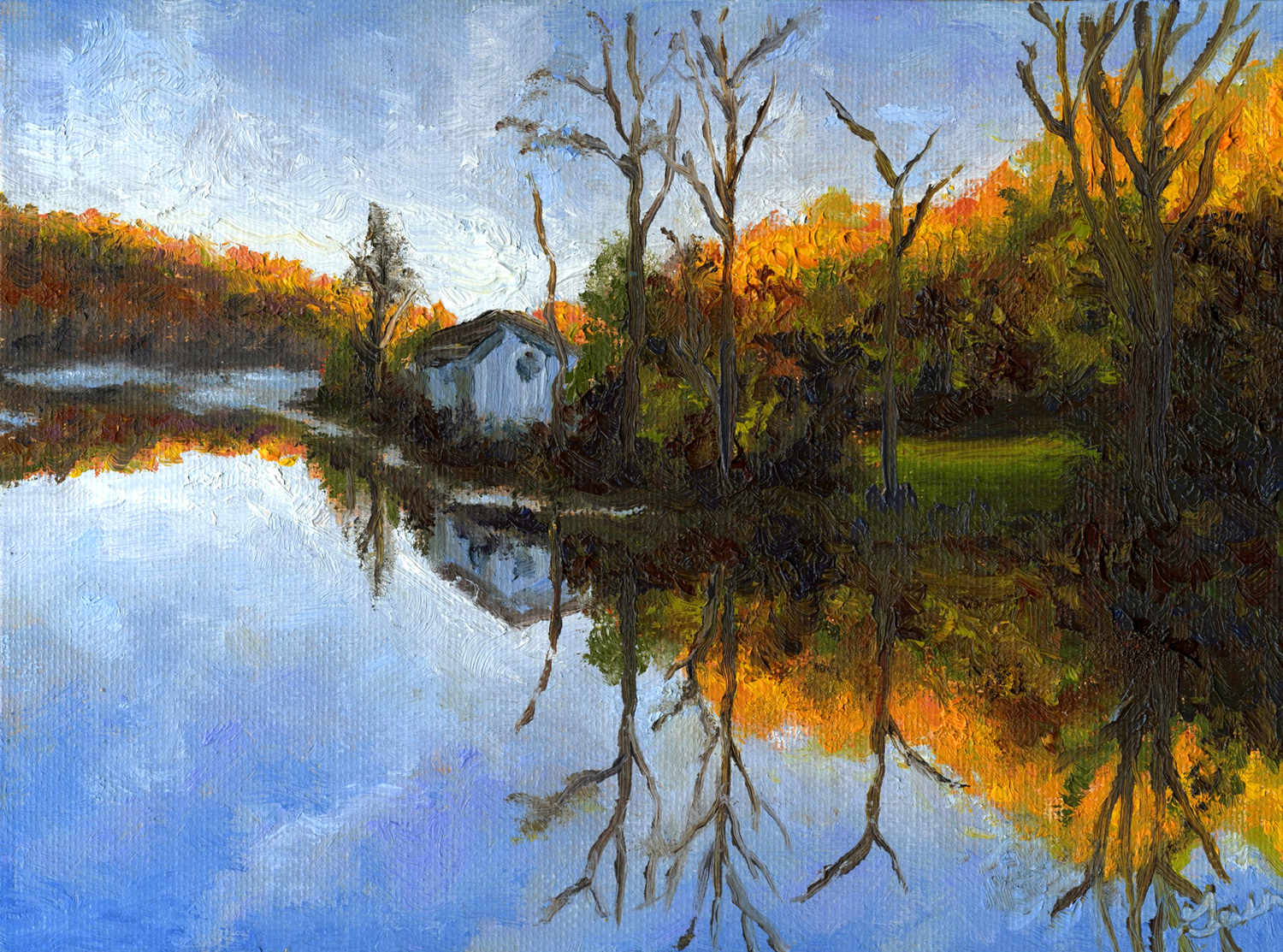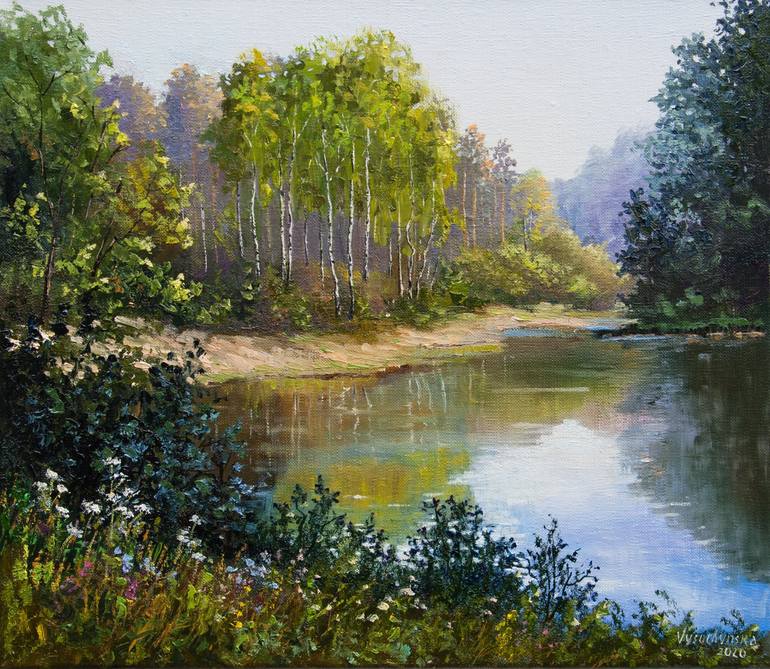Premium Large Format Oil Paintings for Sale Direct from Studios
Discovering All Regarding Oil Paintings: A Guide to Comprehending Their Beauty and Worth
Oil paintings have mesmerized audiences for centuries, providing a glance into the artistic mastery of different periods. Their rich background is intertwined with innovative techniques and profound emotional expression. Understanding the materials and methods behind these artworks can enhance gratitude. In addition, the marketplace for oil paints provides opportunities for collection agencies and investors alike. As one discovers this interesting world, the question occurs: what makes an oil painting truly valuable?
The History of Oil Paint: A Journey With Time
Although oil painting has roots that go back to ancient times, it really grew throughout the Renaissance, when artists found its adaptability and abundant shade potential. Early examples can be traced to the 7th century, with methods developing significantly throughout societies. The medium became famous in Northern Europe in the 15th century, particularly through the works of musicians like Jan van Eyck, that pioneered its usage for thorough realism and lively colors. This duration noted a separation from tempera paints, permitting higher deepness and texture. As oil paint spread, it affected numerous artists, resulting in work of arts by distinguished figures such as Leonardo da Vinci and Rembrandt. The medium's tradition continues, forming the art world well into contemporary times.
Comprehending Oil Repaints: Materials and Techniques
As musicians check out the world of oil paints, they experience a diverse array of products and strategies that specify this tool. The key parts of oil paint consist of pigments, which offer shade, and drying out oils, such as linseed, that bind the pigments and facilitate application. Different additives can change the paint's texture and drying time, boosting versatility. Methods like glazing, where clear layers are accumulated, and impasto, which entails applying thick paint, permit various visual impacts. In addition, making use of brushes, scheme knives, and even fingers can develop unique structures and coatings. Comprehending these techniques and materials makes it possible for artists to completely share their creative thinking and accomplish the wanted effect in their artwork.
The Duty of Shade in Oil Paints
Color plays a crucial function in oil paintings, affecting both visual charm and psychological vibration. Comprehending color theory essentials, consisting of the relationships in between shades, can enhance a musician's capacity to convey state of mind and atmosphere. Furthermore, mastering color mixing strategies enables greater deepness and richness in a paint's combination.

Color Theory Basics
Understanding color concept is necessary for musicians functioning with oil paints, as it forms the foundation for producing visually appealing and harmonious compositions. Color theory encompasses the study of just how shades interact, the shade wheel, and the relationships in between primary, second, and tertiary shades. Artists make use of complementary shades to improve contrasts and create centerpieces, while comparable shades advertise unity and cohesiveness within an item. Furthermore, the concepts of trendy and warm colors affect the understanding of depth and area in a painting. Realizing these concepts enables musicians to adjust color effectively, guiding the customer's eye and communicating their desired message. Mastery of shade theory eventually enhances an artist's capability to communicate feelings and ideas through their job.
Emotional Effect of Shade
The psychological impact of color in oil paints plays a critical duty in just how visitors link and perceive with art work. Colors stimulate details sensations and state of minds, influencing the customer's emotion. For example, cozy shades like reds and oranges can produce a sense of heat and power, while amazing tones such as blues and eco-friendlies often stimulate calmness or introspection. Artists purposefully pick color palettes to improve narrative components, guiding the audience's emotional journey. The saturation and contrast of colors further intensify these effects, attracting focus and creating focus. Inevitably, the interplay of shades in oil paints not just boosts their aesthetic appeal but also functions as a powerful tool for emotional expression, enhancing the audience's experience and interpretation.
Color Mixing Techniques
While many aspects of oil paint add to the overall make-up, grasping shade mixing methods is necessary for achieving desired results and depth. Shade blending can be come close to via numerous approaches, consisting of the additive and subtractive procedures. Additive blending entails integrating shades of light, while subtractive mixing counts on pigments, where shades blend to develop new shades. Musicians commonly utilize a limited palette to develop harmonious works, recognizing the connections between primary, second, and tertiary shades. Methods such as glazing and scumbling additionally boost depth and luminance. By masterfully blending colors, an artist can evoke emotions, develop prime focus, and accomplish a sense of realism, inevitably raising the paint's aesthetic and psychological effect.
Famous Oil Painters and Their Iconic Functions

Well known for their proficiency of color and method, oil painters have actually developed a few of one of the most celebrated artworks in background. Prominent musicians like Vincent van Gogh captivated target markets with his emotive brushwork in "Starry Evening," while Claude Monet's "Impact, Sunrise" laid the foundation for Impressionism. Leonardo da Vinci's "Mona Lisa" remains a long-lasting icon of creative genius, showcasing his skill in catching human expression. Rembrandt's "The Night Watch" highlights his cutting-edge use of light and darkness. Various other significant numbers consist of Pablo Picasso, who transformed modern-day art with his vibrant trial and error in jobs like "Les Demoiselles d'Avignon," and Georgia O'Keeffe, whose vibrant depictions of landscapes and flowers aided specify American modernism. Each musician's special design contributed considerably to the oil paint landscape.
How to Assess the High Quality of an Oil Paint
Assessing the quality of an oil painting includes a cautious analysis of workmanship methods, in addition to an analysis of shade and composition. Observing brushwork, layering, and the application of paint can reveal the musician's ability degree. Furthermore, the interplay of colors and the overall plan of aspects add significantly to the painting's visual value.
Evaluating Workmanship Strategies
A thorough evaluation of workmanship techniques is important for figuring out the high quality of an oil painting. Critics need to initially analyze the application of paint; thick, textured brushstrokes may suggest an experienced hand, while overly uniform applications could suggest a lack of depth. oil paintings for sale. The layering method is additionally essential; the presence of glazes and varied thickness can boost brightness and complexity. Additionally, the quality of the materials used, such as the canvas and pigments, plays a considerable duty in resilience and total visual. Interest to information in components like edges and shifts in between colors reflects the musician's commitment to their craft. Inevitably, these strategies contribute to the paint's psychological effect and market price, functioning as signs of the musician's skill and intent
Examining Shade and Make-up
While reviewing the top quality of an oil paint, one must focus on the interaction of color and structure, as these components are essential to the art work's overall impact. Shade choices can evoke emotions and develop state of mind; for that reason, the artist's palette need to be examined for harmony and contrast. A healthy make-up directs the audience's eye and produces a sense of like it unity. Artists often employ techniques like the policy of thirds or leading lines to boost visual rate of interest. Additionally, making use of light and darkness can include depth, boosting the three-dimensionality of the painting. Ultimately, an effective oil paint marries color and make-up, involving the visitor and inviting a much deeper admiration of the artist's vision and technique.
Taking care of and Preserving Oil Paintings
Appropriate treatment and conservation of oil paints is crucial for maintaining their integrity and longevity. To secure these artworks, it is essential to present them away from straight sunlight, which can create fading and discoloration. Preserving a steady atmosphere with controlled temperature and humidity more aids in avoiding damage. Cleaning up ought to be done gently making use of a soft, dry fabric, staying clear of any type of severe chemicals that can harm the paint or varnish. Regular examinations for indications of wear and tear, such as fracturing or flaking, are advisable. When storing or transferring oil paints, appropriate padding and framing are needed to avoid physical harm. Eventually, persistent care contributes to the visual charm and value of oil paintings with time.
The Marketplace for Oil Paints: Collecting and Investing
Recognizing the marketplace dynamics for oil paintings is necessary for collection agencies and investors alike. The worth of these artworks is affected by numerous elements, consisting of the musician's reputation, historical significance, and existing patterns. his comment is here Collection agencies commonly look for pieces that resonate personally while taking into consideration possible admiration in value. Auctions and galleries serve as main locations for trading, with rates varying based on need and rarity. Purchasing oil paints requires research study right into the market, in addition to an understanding of credibility and provenance. In addition, emerging artists may offer possibilities for considerable returns, while established names can regulate high rates. In general, a tactical approach to accumulating can generate both aesthetic enjoyment and monetary incentives.

Regularly Asked Inquiries
What Are the Environmental Influences of Oil Painting Products?
The ecological effects of oil painting materials include the launch of unstable natural compounds (VOCs), damaging waste generation, and resource extraction for pigments. These factors add to air pollution and eco-friendly deterioration, increasing issues among eco conscious musicians and consumers.
Exactly How Do Different Canvases Affect Oil Paint Outcomes?
Different canvases influence oil paint results significantly. Surface area, absorbency, and structure quality can modify paint application, drying times, and color vibrancy. Musicians often select details canvases to achieve preferred impacts and boost their imaginative expression.
Can Oil Paintings Be Recovered if Harmed?
If damaged, Oil paints can without a doubt be recovered. Professional conservators use numerous strategies to repair tears, clean surfaces, and address staining, making certain that the artwork keeps its original appeal and value for future generations.
What Are the Indicators of an Original Oil Paint?
The indicators of an original oil paint include visible brush strokes, appearance variations, and an uneven canvas weave (oil paintings for sale). Furthermore, authenticity may be verified via provenance, trademarks, and the existence of a varnish layer distinct to oil mediums
Just How Has Technology Influenced Modern Oil Paint Techniques?
Technology has actually significantly affected modern oil painting techniques by introducing electronic tools for preparation, boosted materials for texture and longevity, and on the internet systems for marketing and sharing art, consequently broadening musicians' creative possibilities and audience reach. Oil painting has origins that date back to old times, it really prospered throughout the Renaissance, when artists discovered its adaptability and abundant shade capacity. The emotional influence of shade in oil paintings plays an essential role in just how viewers perceive and connect with artwork. While many elements of oil paint contribute next page to the total composition, mastering shade mixing strategies is crucial for achieving wanted results and depth. Assessing the high quality of an oil paint entails a cautious evaluation of workmanship strategies, as well as an evaluation of shade and make-up. While evaluating the quality of an oil painting, one need to focus on the interaction of color and structure, as these components are essential to the art work's overall effect.